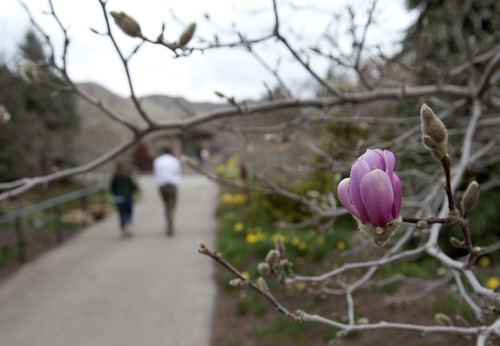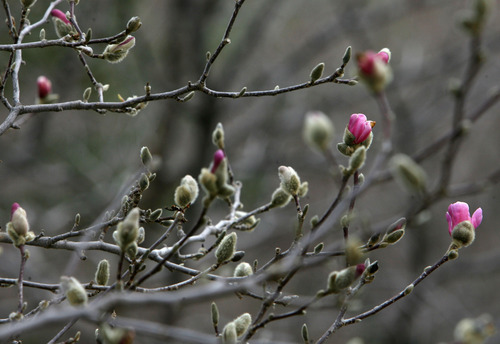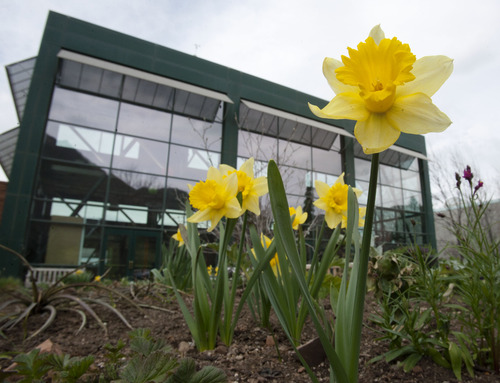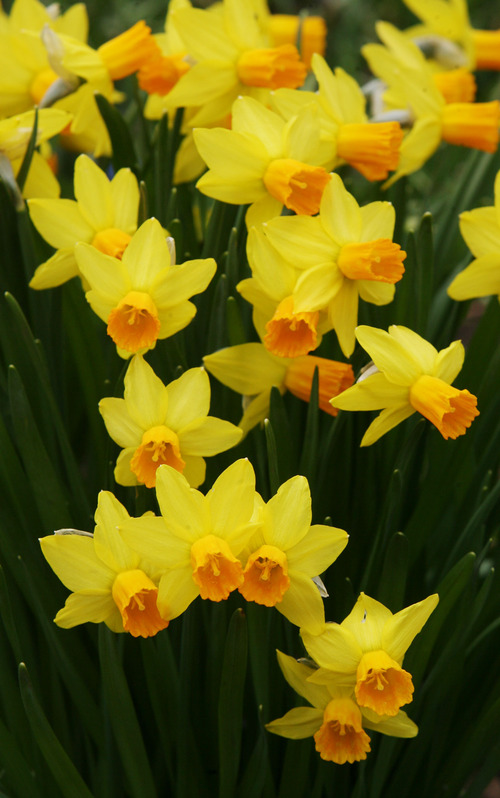This is an archived article that was published on sltrib.com in 2013, and information in the article may be outdated. It is provided only for personal research purposes and may not be reprinted.
Don't go to Red Butte Garden looking for tulips this spring. There aren't any.
"Tulips, for us, are expensive squirrel food," said Marita Tewes-Tyrolt, director of horticulture at the garden. "They dig them up by the hundreds. Bulbs of tulips are edible, and the squirrels have figured that out."
Instead, go see daffodils, some 215,000 of them, as well as banks of Dutch iris, Siberian squill, glory of the snow and other miniature bulb species beginning to bloom. Their peak season usually runs from mid-April to the middle of next month, though truth be told, there is no single best time to visit, Tewes-Tyrolt said.
"I always answer Tuesday, because if you don't come on a regular basis, you always miss something," she said.
With 100 acres of flower displays, natural gardens, walking paths and natural areas with hiking paths, Red Butte Garden is the largest botanical garden in the Intermountain West. About 28 acres are developed formal gardens.
Springtime is an especially good time to visit. Some 360,000 plants cultivated for their beauty will be in bloom at some point during the season. That's roughly two plants for every person who lives in Salt Lake City, Red Butte Garden spokeswoman Bryn Ramjoue said.
"Our mission is to cultivate the human connection with the beauty of living landscapes," she said. "For me, the garden is something for everybody. Whether you are looking to beautify your home landscape or you want to let your kids run free and be loud, the garden creates a space for you to be enriched."
The garden dates to 1961, when University of Utah biology professor Walter Cottam persuaded the state Legislature to establish a research arboretum on the campus. In 1968, the federal government donated land to the university for academic expansion, a piece of which in Red Butte Canyon was to be reserved for an arboretum and botanical garden. And in 1985, it was opened to the public.
Cottam "wanted to set aside land to study different species of trees. It was initially all about the arboretum. Then the vision expanded to test and do research and to preserve regional horticulture," Ramjoue said.
Today, about 160,000 people visit Red Butte each year, where, after several decades of trial and error, 2,739 unique species of plants are visible. The gardens exhibit more than just plants native to the region. There are also nonnative species that Ramjoue said "work" in Utah's arid climate because they get lots of attention from the garden's staff of 17 horticulturists, 50 seasonal workers and 250 volunteers who know how to care for them.
"In the summer, if you come here,you'll see hibiscus blooms that are as big as dinner plates," Ramjoue said. "We are able to do that here because we know what that plant's special needs are."
Next fall, Red Butte workers will build a water conservation garden, which will add four more acres to the garden.
"Right now, it's on an uphill slope. The space will be structured and designed to show off beautiful landscape solutions that don't require heavy water use," Ramjoue said.
Twitter: @sltribpaul —
Red Butte, by the numbers
Hours: Open April 1-30, 9 a.m.-7:30 p.m.; May 1-Aug. 31, 9 a.m.-9 p.m. (closes at 5 p.m. on concert days); Sept. 1-Sept. 30, 9 a.m.-7:30 p.m.; Oct. 1-Dec. 23, 9 a.m.-5 p.m.; Jan. 2-March 31, 9 a.m.-5 p.m.
Cost: Members free; Adults, $10; Seniors and military, $8; children, ages 3-17, $6.

















